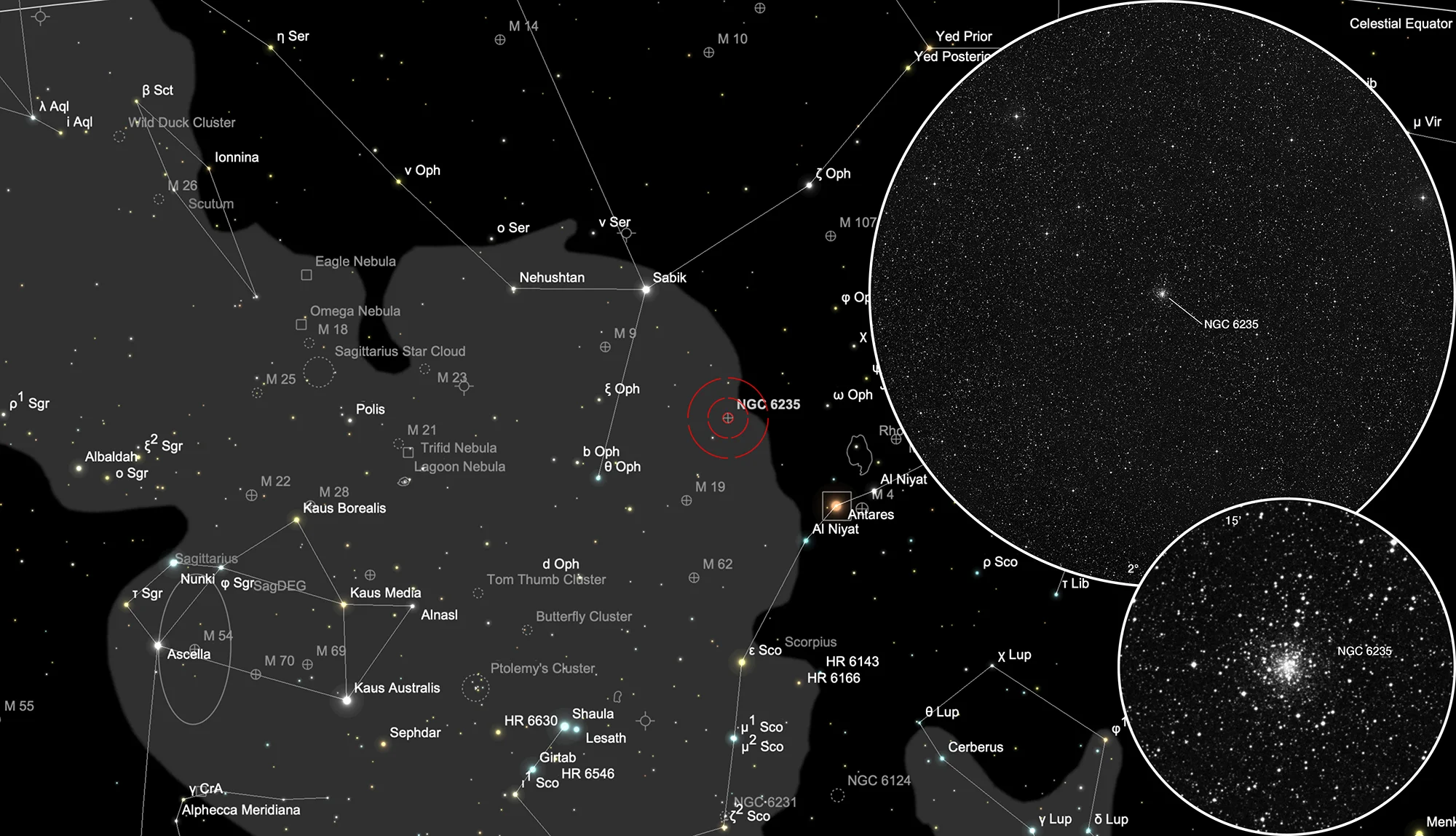Globular Cluster NGC 6235
History
This globular cluster was discovered by William Herschel on 26 May 1786 using his selfmade 18.7-inch reflecting telescope of 20-foot focal length. He listed it as faint nebula II 584 with the notes: «Pretty bright, considerably large, gradually brighter in the middle, easily resolvable, undoubtedly stars.» [464] John Herschel observed the cluster from the Cape of Good Hope on 24 May 1835 (sweep 588), listed it as h 3653 and noted: «Pretty compressed; small; 2'; rather triangular than round; much brighter in the middle; resolved into stars of 14...16 magnitudes.» [11]
Physical Properties
| Designation | NGC 6235 |
| Type | GCL (X) |
| Right Ascension (J2000.0) | 16h 53m 25.4s |
| Declination (J2000.0) | -22° 10' 36" |
| Diameter | 5 arcmin |
| Visual magnitude | 8.9 mag |
| Metric Distance | 11.500 kpc |
| Dreyer Description | pB, cL, iR, rrr, st 14…16 |
| Identification, Remarks | WH II 584; h 3653; GC 4246; GCL 48; ESO 586-SC5 |
Finder Chart
The globular cluster NGC 6235 is located in the constellation Ophiuchus. On 6 June it in opposition with the Sun and is therefore highest in the sky at local midnight. For your location this means the best season for observation is in the months from February to November.
